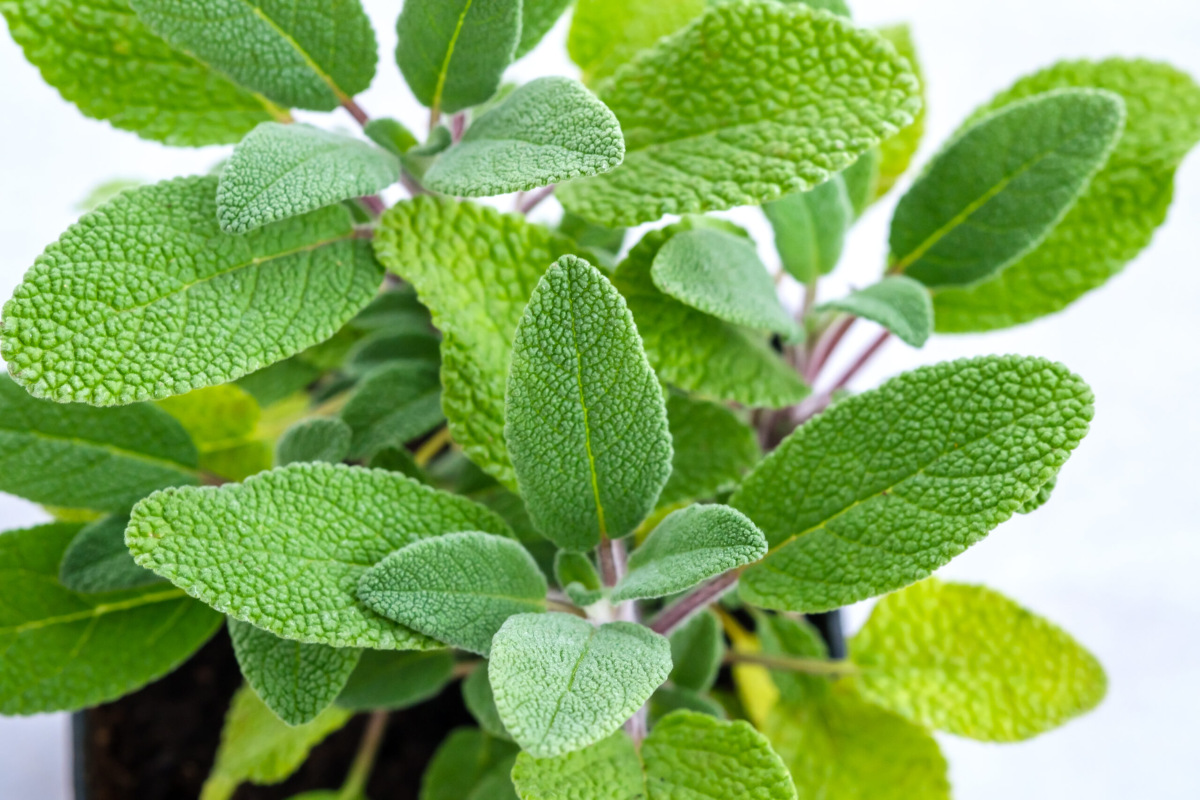
Sage for its Earthy Taste
Earthy, slightly peppery, and aromatic, sage adds depth to a wide range of dishes. Its robust flavour pairs beautifully with poultry, pork, and creamy recipes.
Table of content
What does sage taste like?
What are the main types of sage?
How should sage be used in cooking?
What foods pair well with sage?
How do you store sage?
Sage
Salvia Officinalis
What is Sage?
Sage is a robust herb with a long history of culinary and medicinal use.
Its leaves are often used in stuffing, roasted meats, sausages, and sauces, and can be used fresh or dried.
Sage’s essential oils provide a strong, slightly bitter flavour that holds up well to long cooking.
Traditionally, sage has also been valued for its digestive and anti-inflammatory properties. It pairs especially well with poultry, pork, and rich, creamy dishes, making it a staple in Mediterranean, Italian, and British cuisines.

Facts about Sage
Flavour & Taste
Sage has an earthy, slightly peppery taste with aromatic notes of pine and eucalyptus. Its strong, slightly bitter flavour stands up well to long cooking, making it ideal for roasted meats, stuffings, sauces, and rich pasta dishes.
Where Does Sage Come From?
Sage is native to the Mediterranean region and is now cultivated in Southern Europe, North America, and parts of Asia. It prefers full sun, well-drained soil, and a warm climate.
Popular Varieties of Sage
Common sage
Gray-green leaves, strong earthy flavour, widely used in cooking.
Purple sage
Decorative, milder flavour, used in gardens and some culinary applications.
Pineapple sage
Fruity aroma, often used fresh in desserts, teas, and salads.
Greek sage
Smaller leaves, highly aromatic, used in traditional Mediterranean dishes.

FAQ
What does sage taste like?
Sage is earthy, slightly peppery, and aromatic, with subtle hints of pine and eucalyptus, giving dishes a warm, robust flavour.
What are the main types of sage?
Common varieties include common sage (gray-green, strong flavour), purple sage (decorative, milder), pineapple sage (fruity aroma, fresh use), and Greek sage (highly aromatic, small leaves).
How should sage be used in cooking?
Use fresh or dried sage in stuffings, roasted meats, sausages, sauces, and butter-based pasta dishes. It can withstand long cooking times without losing flavour.
What foods pair well with sage?
Sage pairs well with poultry, pork, sausages, roasted vegetables, and creamy dishes, adding a warm, earthy aroma to both Mediterranean and Western cuisines.
How do you store sage?
Store fresh sage in the fridge wrapped in a damp paper towel or jar of water. Dried sage should be kept in an airtight container away from light and heat.

Recipe Idea
Brown Butter Sage Pasta
Melt butter in a pan, add fresh sage leaves, and cook until fragrant and slightly crisp.
Toss with cooked pasta, a sprinkle of Parmesan, and black pepper for a simple, aromatic dish.
